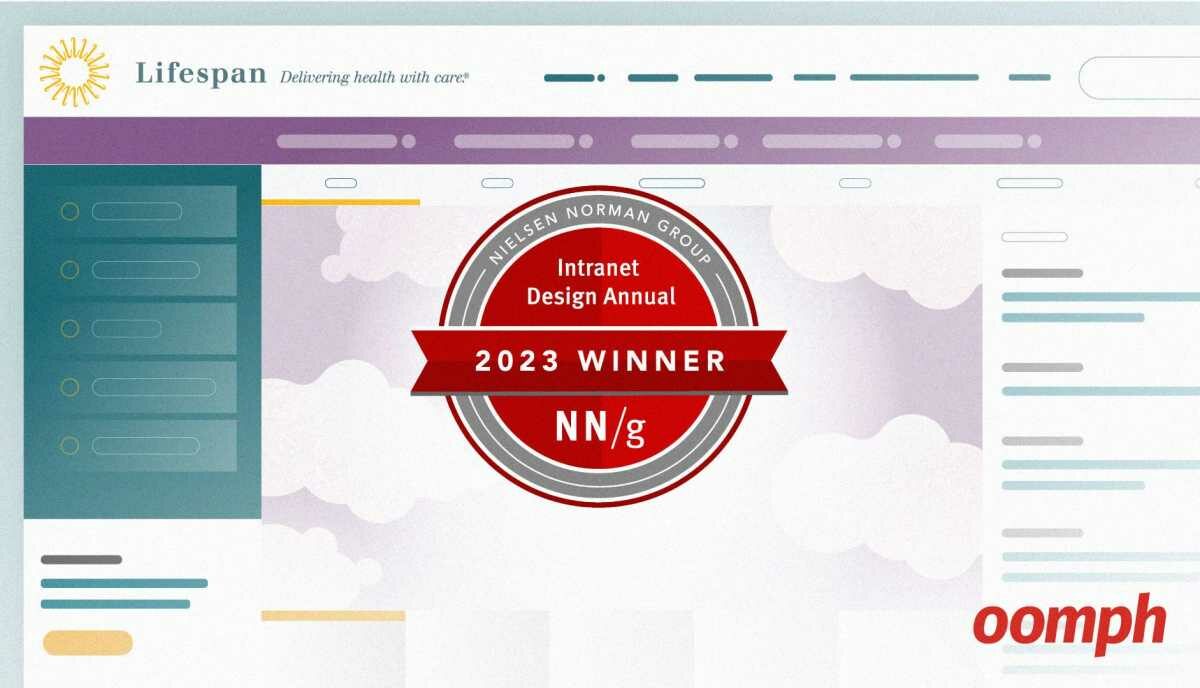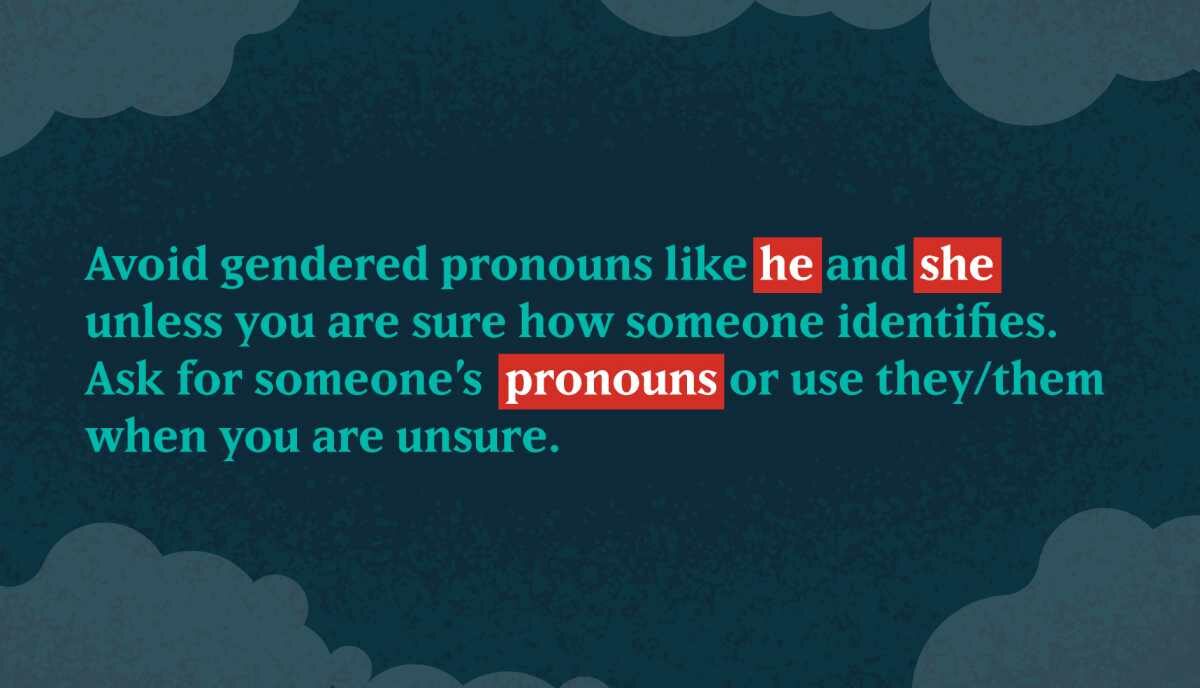9 Tips to Getting Better Design Feedback
As a project manager, I’ve learned that almost nothing can impact a budget quicker than iterative creative design. After all, we do this type of work every day, but our clients may only work on these types of projects once every few years. This can, unfortunately, lead to unnecessary feedback loops, lack of alignment on design direction, and delays in timelines.
Yet with some simple coaching and guidance, getting timely, thoughtful, and actionable feedback should be a breeze. Below are 9 of my favorite tips I’ve compiled over the years to help achieve this goal. This not only sets our agency and project up for success, but it also ensures our clients are happy and feel heard.
#1: Clearly identify business goals
Having clearly identified goals and objectives can act as a north star for your project. Sometimes I find that clients want to explore different ideas and directions that don’t necessarily relate back to the core goals of a project. And while there’s nothing inherently wrong with that, how might it impact the budget or the timeline? If it’s a problem, you can always point back to the core goals and let your client know “we don’t need to explore custom avatar design for the meet the team page because this is an ecommerce store, as an example. Let’s focus on putting time and effort into the shopping experience.”
#2: Invite all client stakeholders to participate in the creative Discovery process
The Discovery process is a meeting of the minds that allows the collective group to peel back the layers and discover the true project objectives, challenges, and desired outcomes. This is the time where all parties are heard (especially stakeholders who may not be consulted again) and aligns everyone on the goals and priorities. Everyone has the opportunity to weigh in and offer their pain points early, and start to shed light on their creative preferences.
Additionally, this gives the creative team the chance to dig in and explore these creative preferences and gets everyone speaking the same language. For example, if the client says they want a “clean and modern” design, the creative team can ask insightful questions to ensure they know what the client means by “clean and modern”.
For more about the Discovery process and the exercises we use to keep conversations moving, read our article about Discovery.
#3: Get client buy-in on a detailed project timeline
First, make sure you know what is driving a client’s desired timeline. Is it a product launch or a major event? Is is a “nice-to-have by this date?” Share a detailed timeline with the client before kicking off the project to ensure it aligns with their expectations. Thorough timelines should integrate each step of the workflow, from internal and client kickoffs, all the way through to final delivery of materials or post-launch support. Be sure to clearly state when client feedback is due and how it will impact the timeline if it’s missed.
Setting clear expectations at the onset of a project helps align everyone towards a common goal and keeps the teams focused each step of the way. You’ll be less likely to receive staggered or late feedback from stakeholders when the client is aware of the expectations, milestones, and the impact of delays.
#4: Determine one client point of contact to be the project owner
This will be your day to day contact to help the project along. Preferably, this person is one of the primary decision-makers. If you can swing it, put it in your contract that this is the person who has the authority to sign off on designs. If this isn’t the case, make sure that you understand the approval process within your client’s organization so you don’t get stuck later waiting for an unknown stakeholder to provide feedback or approvals.
The client project owner should solicit feedback from the primary decision-makers and provide consolidated feedback to the agency, whether it be a marked-up document, an email, comments directly on the deliverable, etc…
Consolidating the feedback gives the client project owner the opportunity to resolve conflicting comments received by the larger stakeholder team and/or seek clarification prior to providing feedback to the agency. In the scenario that the feedback trickles in, remind the client how many revisions are included in the SOW. Late or last-minute feedback will impact the final delivery date and budget.
Make it easy for this client project owner to gather and provide their feedback. At Oomph, we currently like to use Adobe XD because it allows our clients to add pins to specific areas of the design where they have feedback and then provide a written description of what they like or don’t like about it.
#5: Always present designs in person or over video
Seeing a person’s non-verbal expressions is important to help catch any subtleties or thoughts a client may not feel comfortable putting into words, for fear of offending the design team. We encourage all feedback. This is the time that matters most, so it’s not about feeling like the client has to like what we create, it’s about being constructive and working together to get the best possible outcome!
A meeting also helps to ensure aesthetics and creative thinking can be shared with the client, and enables the creative team to get quick feedback and thoughts. Further, a meeting helps the client project owner relay the design team’s decision-making process to the rest of their team. They become an advocate for the design when showing it to others.
Give the client the option to discuss their feedback in a follow-up meeting or call, or proactively schedule a follow-up meeting if their feedback isn’t clear. Be sure to have targeted questions prepared to help guide the conversation.
#6: Ask for negative feedback during creative reviews
Have you ever had a client that only has positive things to say about the designs? I’m sure your design team is good, but are they really that good? This can be a major red flag (particularly in early rounds) that either the client doesn’t know how or feel comfortable giving your team constructive feedback, even if it might be negative, and could eventually lead to a quietly unhappy client.
If you find yourself in this situation, ask the client, “If you had to change at least one thing about this design, what would you change?” It may even help if the project manager or someone else on the team starts to poke some holes in the design to spark conversation. Ultimately this may set the client at ease and help them to appreciate that we want and value their comments. The more communication and mentoring between the agency and client, the less room there is for ambiguity and misunderstanding.
#7: Help the client focus their attention by staggering creative deliverables
Deliver a few creative components or pages to the client at a time. This enables the client to give their undivided attention to a handful of items instead of being overwhelmed by too many things to review at once. For example, when designing a website, we like to deliver 2-3 wireframes instead of the entire website at once. The same concept can be applied to copy and design. The client may get hung up on a design element such as a button and completely miss the call to action language.
As a bonus, you’ll be able to apply the feedback received to future deliverables moving forward.
#8: The final product is the final design
This might be the most important tip. Sometimes clients get caught up in the minute details of a design deliverable. What they may not realize is that these details are subject to change in the development process — the design is a guide, but it is not the final product. Clients need to be educated that the final product is the final design.
What I mean by that is the final product will not be a pixel-perfect replica of the design files. Some aspects of the design may be a bit complicated to implement and so we leave it to our UX engineers to make the best use of the budget when implementing the design. Also, a design file is flat and lacks interactivity. Once you can see it come to life on a website or app, we will need to apply subtle changes that enhance the user experience. This is when we can work out some of the minutiae of spacing, hover interactions, or what something really feels like once you have real content in place.
#9: Stay agile
As the project progresses, deliverables or requirements may change. If new high-value deliverables are identified, work with your client to add more budget or adjust the scope of the project to deprioritize less impactful work. Ultimately, it’s our goal to provide clients and their end-users with the best possible product we can create for their budget.
These nine tips are part of the framework we use to keep communication flowing, move projects along their track, and build trusting relationships as we move from UX and design into development. We have found success with clients that have visually savvy marketing teams, but more importantly, we have found great success with teams that only approach a design project once in a while. Setting the right expectations early, making sure the right stakeholders are at the table, probing for meaningful feedback, staying nimble, and advocating for the end-users will always be a successful recipe for outstanding outcomes.



